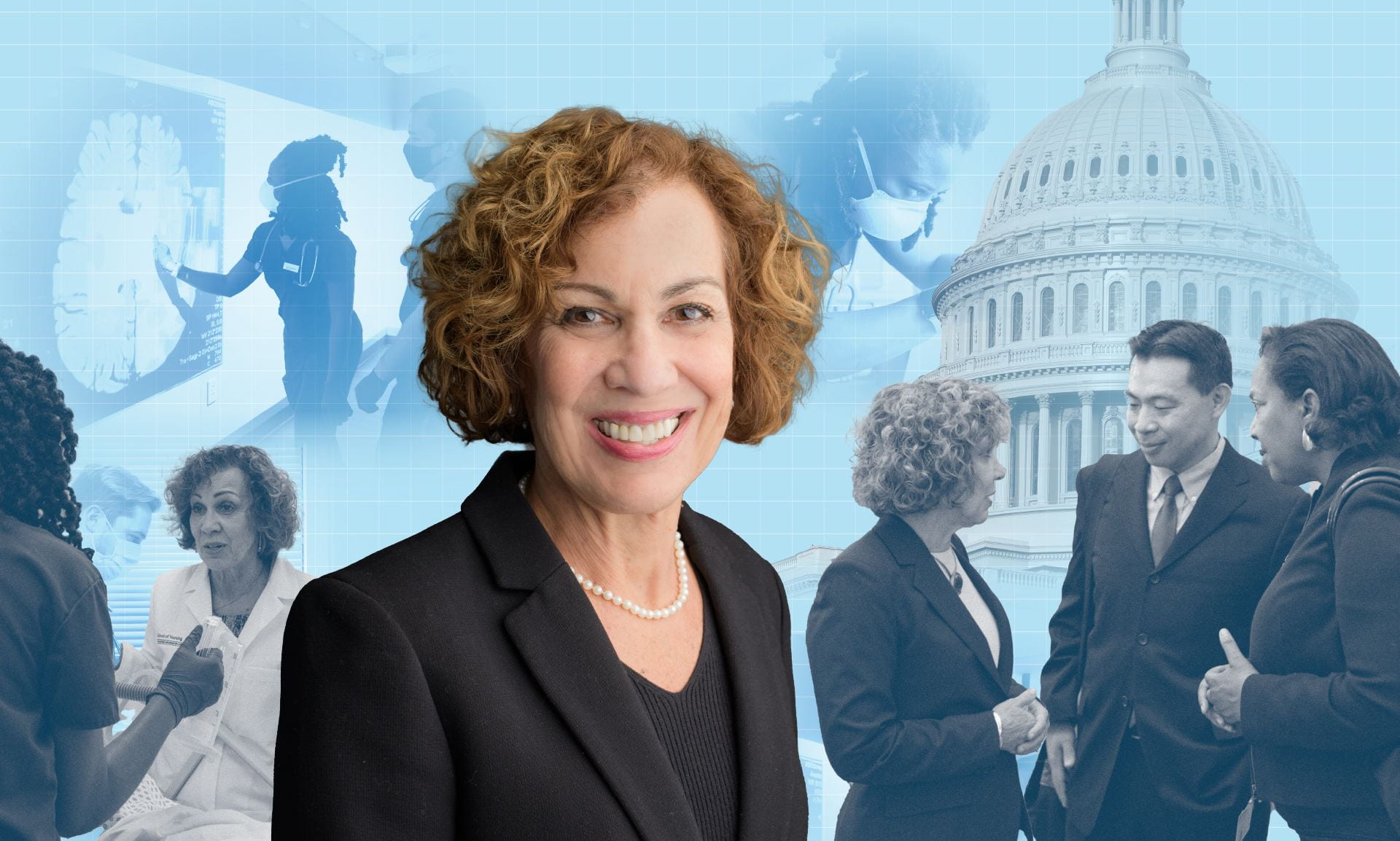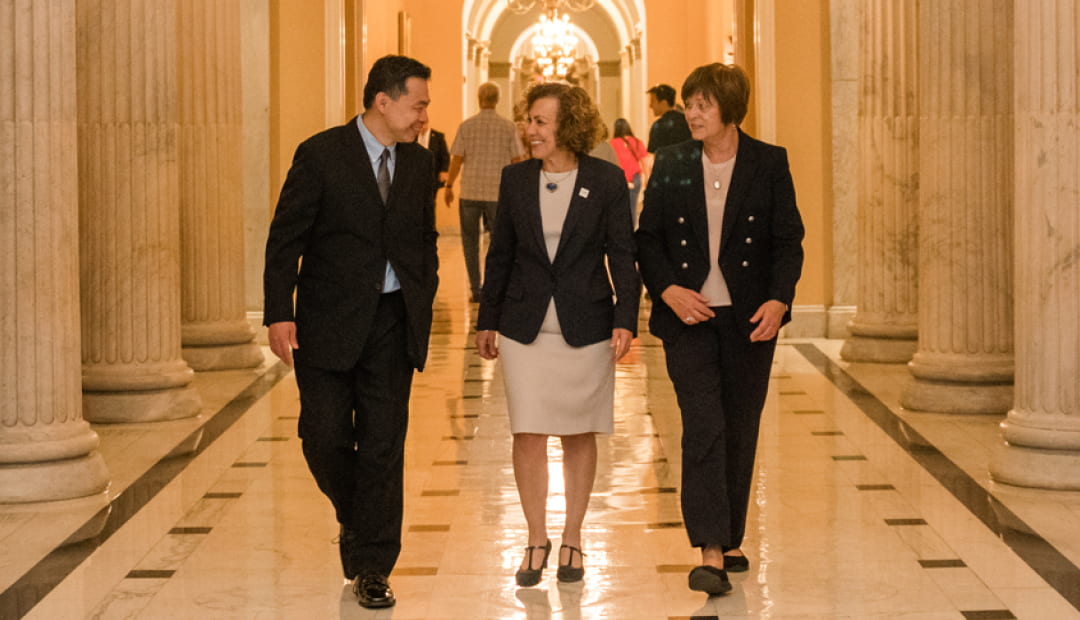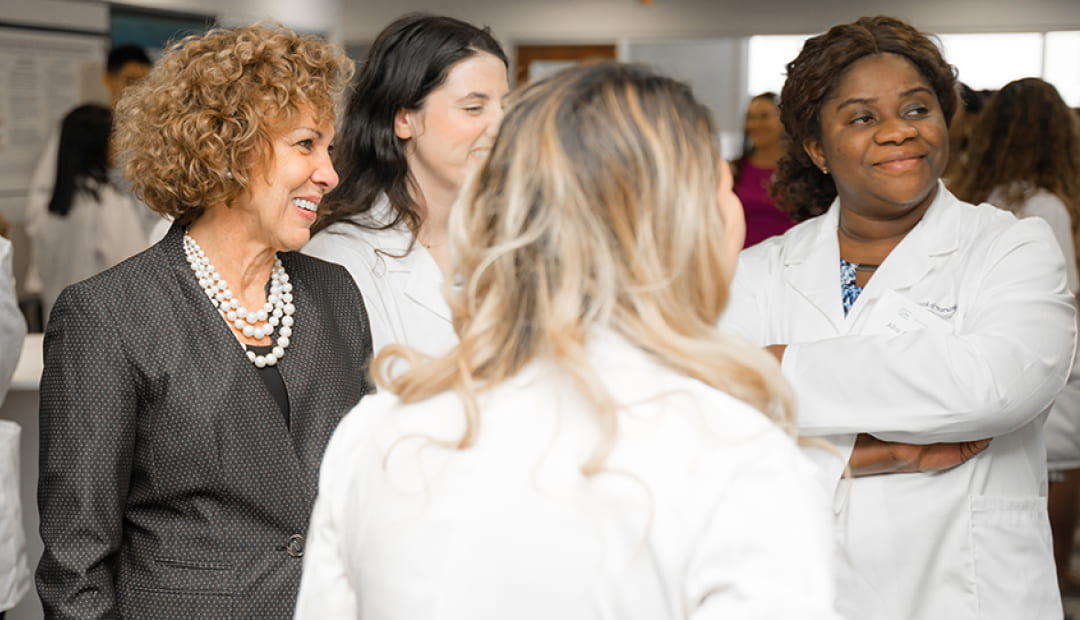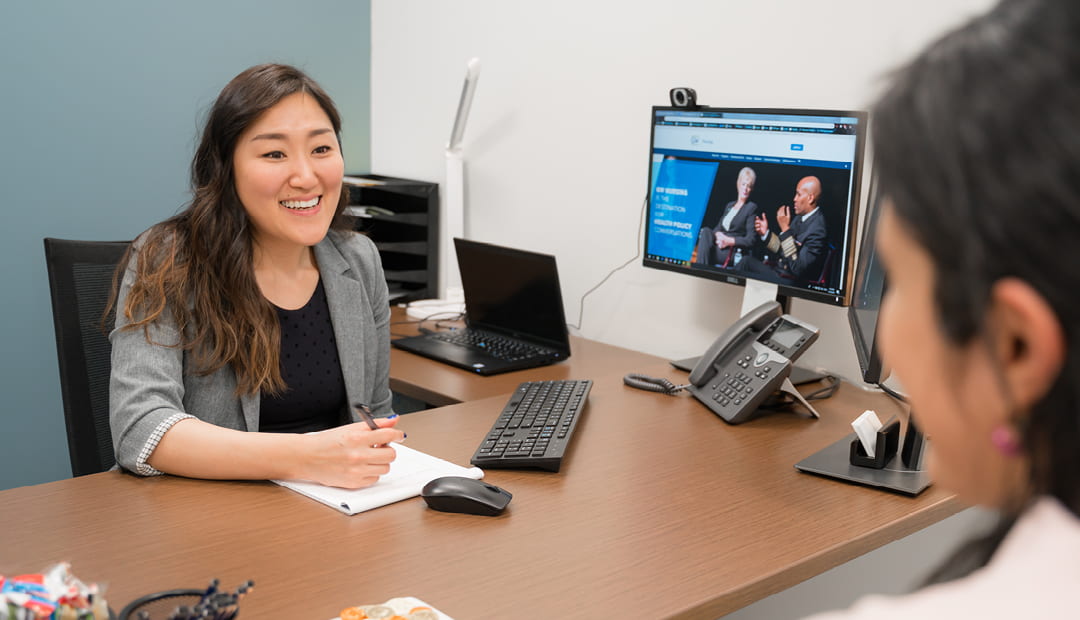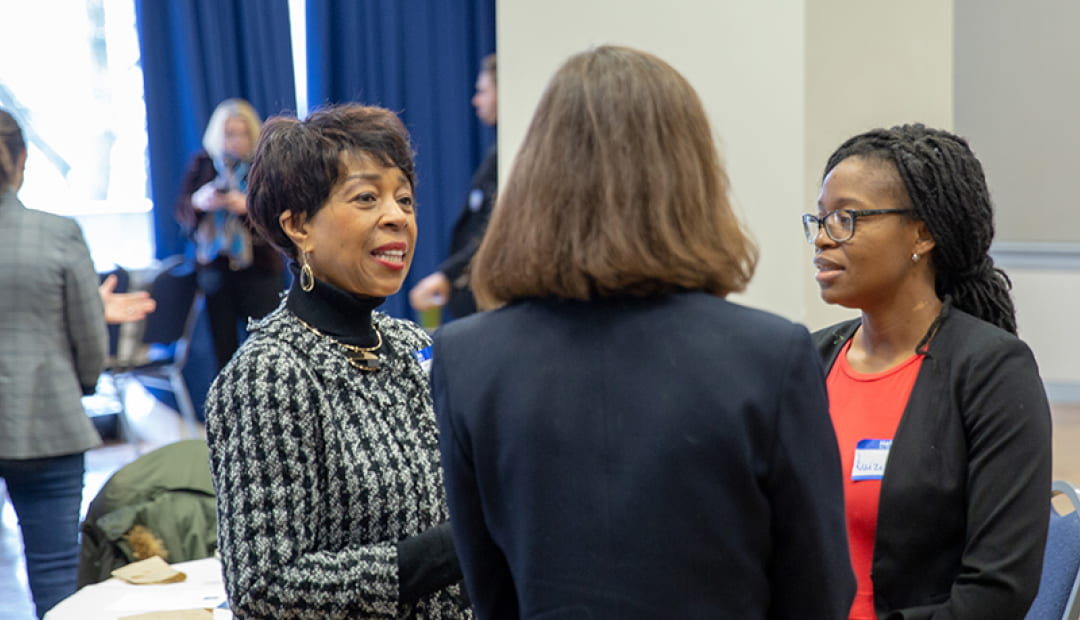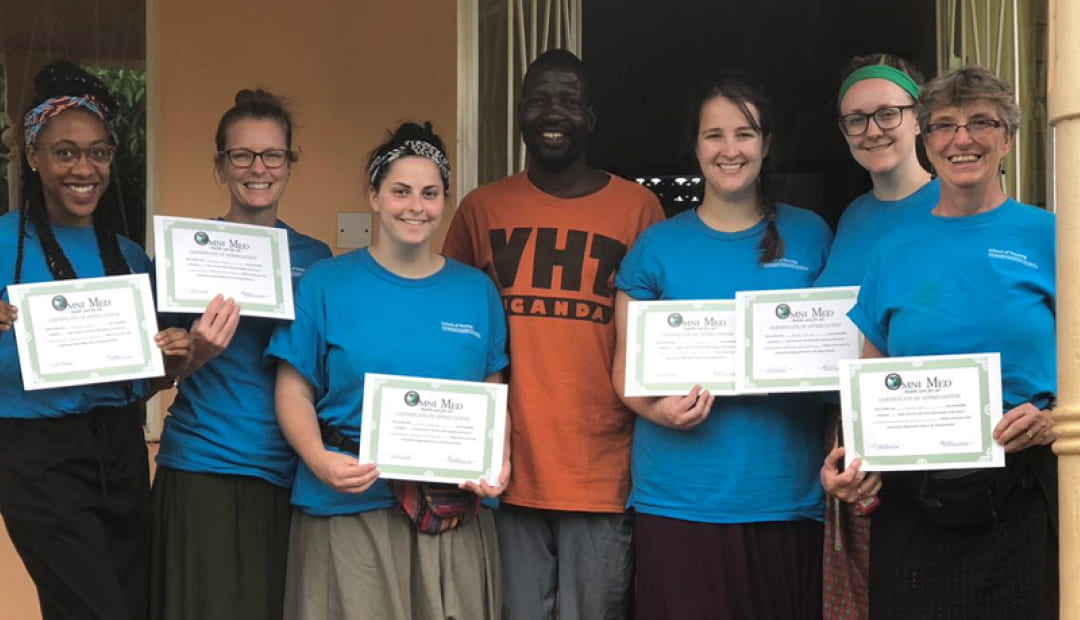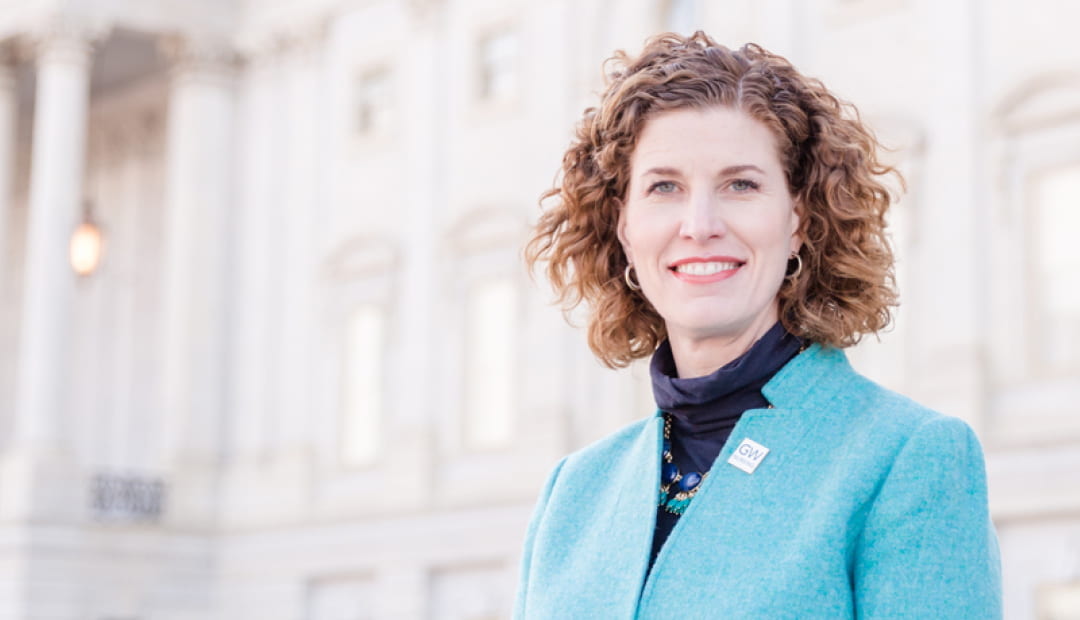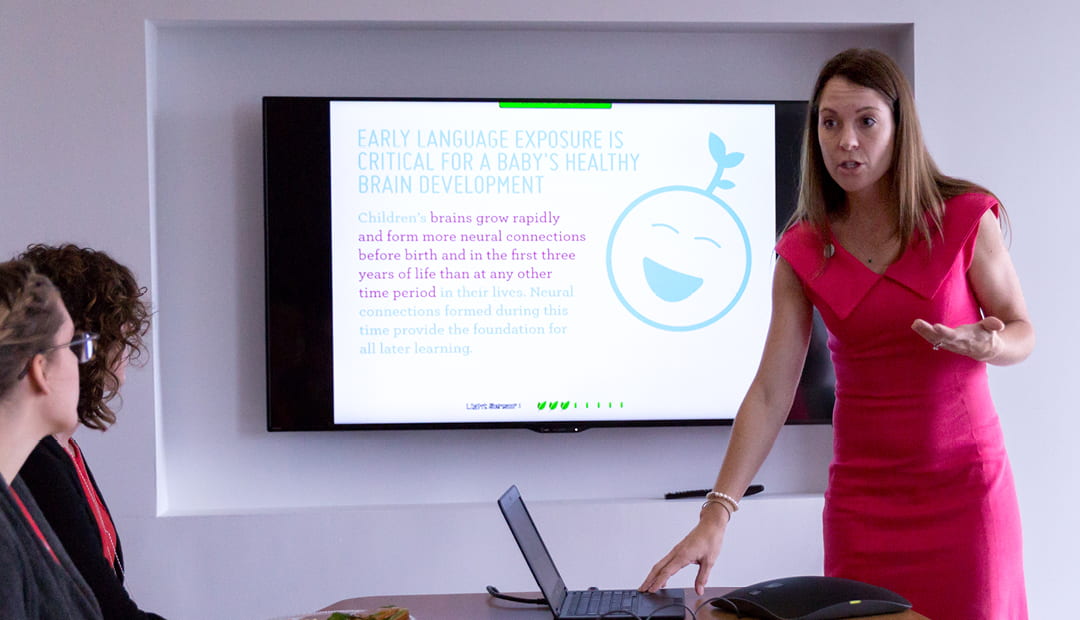GW Nursing this fall will launch a new Doctor of Nursing Practice (DNP) degree in the field of health policy.
The 42-credit program, led by Program Director David Keepnews, is for nursing professionals interested in acquiring in-depth knowledge of the health policy process and how to influence policy to improve quality of care, increase access and control costs.
Located in the heart of Washington, D.C., GW is strongly associated with policy. Only blocks from the White House, Capitol Hill and dozens of government and professional organizations, the university will offer students pursuing the DNP the unique opportunity to engage with policymakers at the national level.
Jean Johnson, dean emerita and executive director of GW Nursing’s Center for Health Policy and Media Engagement, said a greater number of nurses are needed who understand the important role policy plays in the nation’s health care.
“There are many very serious health care issues facing our country in terms of cost, access and quality, and nurses need to bring their knowledge of population needs and effective interventions into the policy discussion to improve our health system and provide safer, higher-quality care,” she said.
Opportunities for graduates include consulting firms, educational foundations, health departments, nonprofit groups, academic institutions and governmental organizations.
Mercedes Echevarria, an associate professor and assistant dean for the DNP program, said one of the motivations behind the DNP in Health Policy, which is offered in an online format, is a need to prepare a new generation of nurses who can advocate for patients and the nursing profession as a whole.
“We have a faculty well prepared to teach this material. Some have expertise in research that supports health policy, while others are experienced in advocacy and policy analysis,” she said.
For more information, visit go.gwu.edu/policyDNP.
